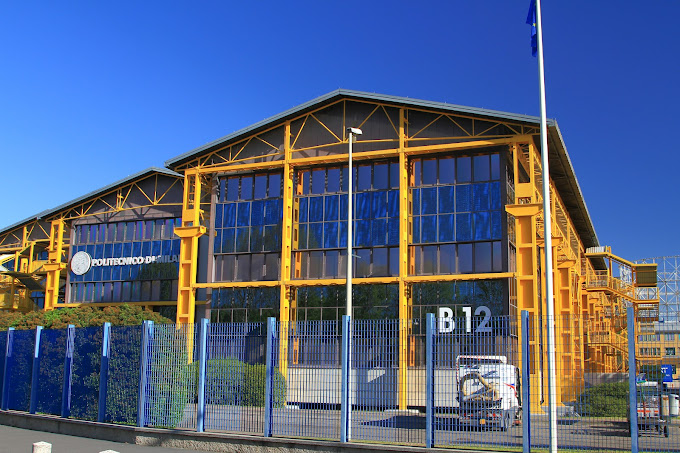Thesis list

@ SPLab
These these activities will be developed at the SPLab, Bovisa South campus.
PoliMi Advisor: S. Carlotti
Starting date: now
Availability: 2 candidates
Location: SPLab (POLIMI)
The topic targets the analysis of launchers with different propellants (e.g., LOX/RP1, LOX/CH4, H2O2/RP1), focusing on combustion products emission during flight. Emissions will be quantified during trajectory optimization using the NASA CEA code, combining -eventually-climatological models to evaluate atmospheric interactions using MATLAB and Cantera. Throttling and mixture ratio shifts will be analyzed, and the impact of environment-related constraints during the optimization will be assessed.
PoliMi Advisor: S. Carlotti
Starting date: now
Availability: 2 candidates
Location: SPLab (POLIMI)
The topic focuses on the development of AI-assisted robust design methodologies to enable faster optimization of liquid rocket upper stages using machine learning and simulations. The design framework will be based on synthetic or real launchers data to create multiple AI-based models, supporting both conceptual trade-off analysis and detailed design optimization.
PoliMi Advisor: S. Carlotti
Starting date: now
Availability: 2 candidates
Location: SPLab (POLIMI)
This work develops a general numerical framework able to provide a description of a packed bed reactor, along with the necessary engineering correlations for the full characterization of mass, energy, and momentum transfer. In particular, 1D pseudo-homogeneous/heterogeneous models are considered, targeting the description of both steady and transient flow. Experimental data will be provided for validation purposes.
PoliMi Advisor: S. Carlotti
Starting date: now
Availability: 1 candidate
Location: SPLab (POLIMI)
This work focuses on analysing several microencapsulation techniques and identifying suitable characterization methodologies for the resulting capsules. A preliminary experimental investigation will be carried out to assess the feasibility of the selected methodologies, assessing their effectiveness in encapsulating HTP within a protective shell or matrix to enhance its stability and control its release.
PoliMi Advisor: F. Maggi
Co-Advisor: D. Zuin
Starting date: September 2025
Availability: 1/2 candidates
Location: SPLab (POLIMI)
This Master Thesis project follows the work previously conducted on the RECS (Refuelling Conceptual Solution) mission developed by SPLab and launched aboard a Falcon 9 in 2023, with the goal of advancing the understanding of in-orbit self-pressurizing propulsion systems through direct analysis of telemetry orbital data. Building on earlier thermal modeling and simulation efforts, this thesis will focus on retrieving, processing, and analyzing real in-orbit data acquired from the RECS payload to extract relevant physical trends, validate ground-based predictions, and support the characterization of system behavior under operational space conditions. The candidate will begin by reviewing the RECS system architecture and telemetry acquisition protocols, gaining a comprehensive understanding of the data structure, sensor layout, and measurement objectives. The bulk of the work will consist in developing a robust data processing pipeline to handle raw telemetry streams, performing noise filtering, synchronization, outlier detection, and extraction of physical parameters such as pressure, temperature, and fluid state evolution. Using MATLAB or Python, the student will implement automated scripts for data cleaning, statistical assessment, and time-series reconstruction. The retrieved telemetry will then be correlated with preexisting ground test results and numerical predictions, such as thermal models developed in earlier work, in order to assess the model accuracy and identify areas of discrepancy. Advanced signal analysis and parameter estimation techniques may also be applied to infer unmeasured quantities or estimate model parameters in orbit. Finally, the candidate will compile a full post-mission analysis report, drawing conclusions about the in-orbit performance of the self-pressurized propellant, and outlining possible improvements for future iterations of the system. Experience with MATLAB and/or Python for numerical data analysis is required.
PoliMi Advisor: F. Maggi
Starting date: September 2025
Availability: 1/2 candidates
Location: SPLab (POLIMI)
This thesis is the prosecution of a previous activity. It consists of the analysis of the gas exhaust products contained in the plume of a small rocket propulsion unit. Starting from the apparatus already available from a preceding activity, the work consists of the development of a test campaign to systematically analyze the pollution emitted from a propulsion unit through spectroscopic technique.
PoliMi Advisor: F. Maggi
Co-Advisor: to be defined
Starting date: September 2025
Availability: 2 candidates
Location: SPLab (POLIMI)
Satellite demise can be enhanced if energetic reactions are introduced in key components or positions. Within a European project, this solution is under investigation. The candidates will take part to the R&D activities regarding the development of these energetic charges, shaped for the use in satellites. The target of the activity consists of obtaining charges with mechanical consistency and capable of igniting within ranges of temperature, imposed by project requirements.
PoliMi Advisor: F. Maggi (To be confirmed)
Company Supervisor: Dr. D. Zuin
Activity begins in September 2025.
Availability: 1/2 candidates
Location: D-Orbit facility, ComoNext Hub, Lomazzo (CO)
Candidacy closes on September 15th
Composite Overwrapped Pressure Vessels (COPVs) are critical components in spacecraft pressurization and propellant storage due to their lightweight structure and ability to withstand high internal pressures, making them particularly attractive for mass-sensitive missions pursued by New Space companies. This Master Thesis project focuses on the end-to-end design, manufacturing development, and performance evaluation of COPVs tailored for space propulsion systems, with a final phase dedicated to the integration of innovative processes optimization into the manufacturing process. The thesis begins with a comprehensive literature and market review of COPV applications in space propulsion, exploring design principles, material selection (including liner types, fiber composites, and resin systems), and manufacturing techniques such as filament winding, curing, and pressure testing. The candidate will then conduct a detailed analysis of structural performance of tanks for space applications using CAD and simulation tools, developing mechanical designs based on propulsion system requirements and evaluating them through dedicated analyses. Key manufacturing challenges such as resin impregnation control, liner-composite adhesion, curing consistency, and non-destructive evaluation (NDE) shall be investigated from state -of-the-art studies to understand reliable and repeatable production workflow available in the industry and academia. The master thesis will then focus on a proposed manufacturing and testing process within the COPV workflow. The candidate shall identify critical equipment, define quality control and certification protocols, evaluating the criticalities embedded in the process. In the final stage of the thesis, the student shall explore how innovative techniques (e.g. AI driven optimization tools for process control) can be embedded into the COPV development workflow. The student will analyze how these technologies are optimizing winding paths, tuning process parameters, and supporting predictive maintenance or anomaly detection in advanced manufacturing environments. Techniques to improve manufacturability, reliability, and efficiency shall be considered in the analysis. A case study shall be selected and developed to demonstrate the integration of innovative techniques into either filament winding or structural performance prediction, supported by simulation tools such as MATLAB – Simulink framework. The candidate is expected to have strong skills in this software and previous knowledge of CAD modeling and structural analysis. Prior exposure or interests on composite materials, simulation environments, and/or machine learning techniques are an advantage.
PoliMi Advisor: F. Maggi (To be confirmed)
Company Supervisor: Dr. D. Zuin
Activity begins in September 2025.
Availability: 1/2 candidates
Location: D-Orbit facility, ComoNext Hub, Lomazzo (CO)
Candidacy closes on September 15th
This Master Thesis project addresses the analysis, design and development of advanced pressure control systems applied to self-pressurized propulsion units. In the last years, research on methodologies for controlling the pressure in self-pressurizing units is becoming pivotal to leverage on the self-pressurizing characteristics of ‘green’ and self-pressurized propellants. These propellants, increasingly adopted in modern space systems due to their reduced toxicity, present new challenges and opportunities for pressure regulation within distributed and compact propulsion architectures. The thesis will begin with a thorough review of self-pressurizing systems, focusing on pressure control strategies including both passive and active regulation techniques. An analysis of the state of the art for typical operational requirements across various mission phases shall be performed. Particular attention will be given to regulation methods capable of handling reactive propellants. The state-of-the-art analysis shall focus on regulation through multi-stage expansion, valve actuation, and identify the interactions available for the process at closed-loop sensor feedback level. In the second part of the work, the student will then select a pressure control method capable of stabilizing flow conditions, improve feed system flexibility, and simplify subsystem architectures. The work will focus on the dedicated analysis of the component, including its sizing and design optimization for a space propulsive system. During this phase, the candidate will analyze different system criticalities associated to the component such as its control mechanism, sensor integration, material compatibility, redundancy. The design phase will involve CAD modelling, structural evaluation and dynamic simulation of the system behaviour using MATLAB/Simulink. Finally, the student shall define a component test and validation plan aligned with aerospace qualification standards, and identify future steps on how modular, smart control units can enhance system performance and reduce development complexity. Background in MATLAB/Simulink and knowledge of CAD mechanical design is required for this thesis.
Candidacy closes on September 15th
Composite Overwrapped Pressure Ve

Corporate theses
These thesis are planned and managed by a company. These theses may bring you outside POLIMI. Not in every case. The student must be aware that, typically, financial support is not granted by the hosting institute which decides timing, and methods for thesis development.

Project @ DAER
Cooperative project laboratory involving developed at the Dept. of Aerospace Science and Technology, Bovisa South campus.
The development of reusable launch vehicles is a multidisciplinary effort, requiring advancements in several disciplines, such as materials, structures, propulsion, aerodynamic and guidance and control systems. The Reusable Launchers Thesis Lab offers students the opportunity to conduct their thesis within a collaborative research environment, contributing to the broader framework of reusable launcher design.
The laboratory will begin in April and will include regular review meetings with the supervising professor, as well as joint review sessions involving all participating students.
The selection process consists of two steps:
a. an evaluation based on GPA and attended and passed courses relevant to the chosen topic – note: students can select up to 3 topics.
b. an interview with the supervising professor for the top 5 ranked candidates in each topic.
Note that a maximum of two remaining exams is required.
The deadline for filling this form is March 28th
You can read more about the available topics and advance your candidacy HERE
Note #1: candidacy for internal theses should be addressed to the advisor of the activity. Send an email with subject “CANDIDACY [FAMILY-NAME] THESIS”.
This email will have to include two PDF attachments: a CV in English and a list of exams with scores.
Note #2: address the candidacy for corporate theses to Prof. Maggi (check deadlines). A selection process will follow. Send an email with subject “CANDIDACY [FAMILY-NAME] CORPORATE THESIS”. This email will have to include two PDF attachments: a CV in English and a list of exams with scores.
Last Update: July 22nd, 2025
